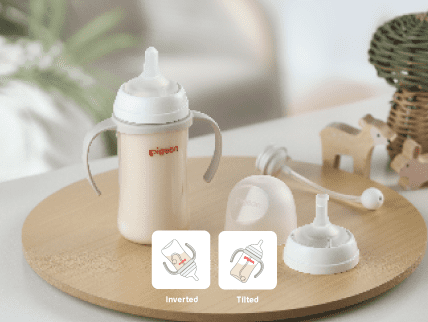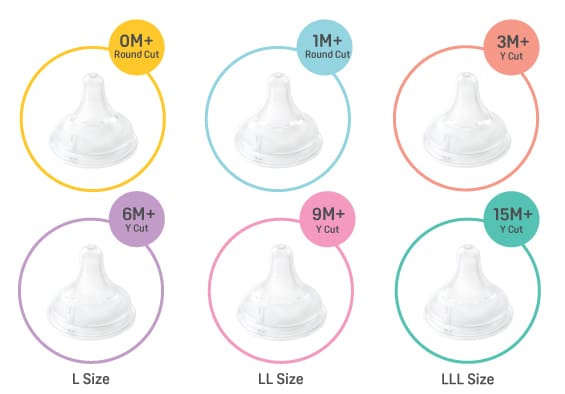Breastfeeding is nature’s most precious gift to mankind. Exclusively breastfeeding for the first 6 months is the most beneficial to your child’s well-being as well as yours and the family’s. Here are some must-knows to help you build your confidence in your journey of breastfeeding.
The 3 key factors of breastfeeding
A baby’s ability to drink is completely different from that of an adult. There are 3 key steps that enable your little one to suck milk smoothly and efficiently.
1. Latch on (Attachment)
The lips open outward and latch onto the areola.
2. Peristaltic tongue movement (Sucking)
Wave-like tongue movement squeezes the nipple and extracts milk.
3. Swallowing
The back of the tongue rises, channelling the milk into the oesophagus.
How to help your baby latch on
It is important to help your baby latch on properly to take full advantage of this peristaltic movement, which the baby is born with. For new moms, this may be difficult to grasp but parenthood is always a journey of learning. Give yourself and your baby the time to adapt.
1. Position your baby so that he/she is facing the nipple. This is best achieved if mom and baby are stomach to stomach. The baby’s lower jaw should be touching the bottom of the areola.
2. Touch the baby’s lips with the nipple or areola to stimulate the rooting reflex. Wait until the baby opens their mouth then move him/her closer to the breast.
3. The part of the areola next to the baby’s lower jaw enters the baby’s mouth first. Check to see if the baby has firmly latched on to the breast.
4. Your baby will usually unlatch when he/she is done feeding, but it is not uncommon for them to stay on though not actively sucking. If this happens, gently slide your finger into the side of the baby’s mouth to break the seal.
Breastfeeding positions
Mothers generally breastfeed their babies at least 8-10 times in 24 hours and feedings can last from 10 to 30 minutes but this can vary for each baby. Moms need to take note of the baby’s hunger cues rather than watch the clock. Your mental & physical state plays a vital role – it is important for you to feel relaxed to continue to breastfeed. Holding your baby correctly and maintaining the appropriate posture is crucial in helping the baby latch on properly, take in breast milk effectively and prevent discomfort for you during feeding sessions.
There are 4 basic points to take note of when positioning your baby:
1. Keep your baby’s head and body in a straight line.
2. Your baby’s face is towards you & his mouth and nose are facing your nipple.
3. Hold your baby close to you to ensure your baby takes in as much nipple and areola.
4. Keep your baby’s head and body aligned & back well supported.
Everyone is different, what works for one Mom and her baby, may not work for you. These are 4 basic positioning that may help when you’re just starting but feel free to explore to find one that you’re most comfortable with.
Side hold or commonly known as cradle hold is one of the most common breastfeeding positions. With your baby close to your stomach, hold him/her at breast level and support their head on the arm that is on the same side as the breast you are nursing with. Similarly, the cross-cradle hold or transitional hold is good for babies who have difficulty latching or those with low birth weight. In this position, you support the baby’s head using the arm on the opposite side of the breast he/she is feeding from, and your other hand should be supporting the breast. This gives you better control of the movement of your baby’s head and you can choose to shift to the common cradle hold after your baby has latched on tightly and started to drink.
There is also the football hold (clutch hold) where the baby goes under the arms at the side of the feed and you support his/her head and body with the same hand. Hold the baby close to your side and support the breast with your other hand. As this avoids the abdominal area, this position is especially good for mothers with Caesarean scars since it won’t press directly on the wound. Last but not least, the straddle hold is for smaller babies or those who have difficulty latching on firmly. Simply sit the baby on your knee and support their head and shoulders.
No doubt, breastfeeding is no easy feat, but it is for sure fulfilling as you get to bond with your little one during each session. Especially for new mummies, it may seem difficult or even hurt when you first start out but don’t hesitate to reach out to lactation consultants for help! There are also tons of products in the market that helps you with your breastfeeding journey.
Do what works best for you and your baby. You got this Mama!
A new mum's ultimate breastfeeding guide














